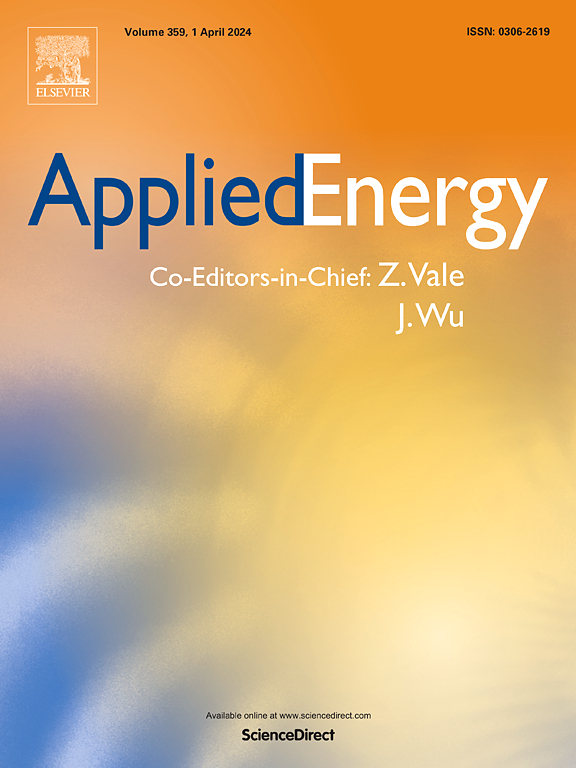Experimental study and performance evaluation of a large-scale multistage metal hydride-based hydrogen compressor
IF 10.1
1区 工程技术
Q1 ENERGY & FUELS
引用次数: 0
Abstract
Hydrogen is crucial for a sustainable energy future, serving as a clean energy carrier. Efficient compression is vital for its effective storage and transport. This study details the design and development of an industrial-scale setup for green hydrogen compression using a Metal Hydride Hydrogen Compressor (MHHC) integrated with renewable thermal system. The system is designed to compress hydrogen from an initial pressure of 10–20 bar to over 250 bar, utilizing thermal energy inputs available at temperature below 100 °C. In this study, 550 g of hydrogen was compressed to 300 bar within the reactor in three stages between the temperature range of 5–91.2 °C, making it suitable for coupling with solar thermal systems. The stage 1 reactor, containing 25 kg of La0.8Ce0.2Ni5, absorbed 307 g of hydrogen in 44.6 min and transferred 288 g (93.8% reversibility) to the stage 2 reactor, which contained an equivalent mass of La0.5Ce0.5Ni4Fe. Finally, 275.5 g of hydrogen was transferred to the stage 3 reactor, consisting of Ti0.8Zr0.2CrMn0.3Fe0.6Ni0.1. The absorbed hydrogen was then heated to 91.2 °C to attain a pressure of 300 bar. The system required 36.2 MJ (10.1 kWh) of thermal energy to complete one compression cycle for 275.5 g of hydrogen, achieving a first law efficiency of ∼5%. At a Hydrogen Refueling Station (HRS) using the developed MHHC system, refilling a Type I H2 cylinder up to 155 bar would require four refills transferring about 466 g of hydrogen in 34.34 min.
求助全文
约1分钟内获得全文
求助全文
来源期刊

Applied Energy
工程技术-工程:化工
CiteScore
21.20
自引率
10.70%
发文量
1830
审稿时长
41 days
期刊介绍:
Applied Energy serves as a platform for sharing innovations, research, development, and demonstrations in energy conversion, conservation, and sustainable energy systems. The journal covers topics such as optimal energy resource use, environmental pollutant mitigation, and energy process analysis. It welcomes original papers, review articles, technical notes, and letters to the editor. Authors are encouraged to submit manuscripts that bridge the gap between research, development, and implementation. The journal addresses a wide spectrum of topics, including fossil and renewable energy technologies, energy economics, and environmental impacts. Applied Energy also explores modeling and forecasting, conservation strategies, and the social and economic implications of energy policies, including climate change mitigation. It is complemented by the open-access journal Advances in Applied Energy.
 求助内容:
求助内容: 应助结果提醒方式:
应助结果提醒方式:


